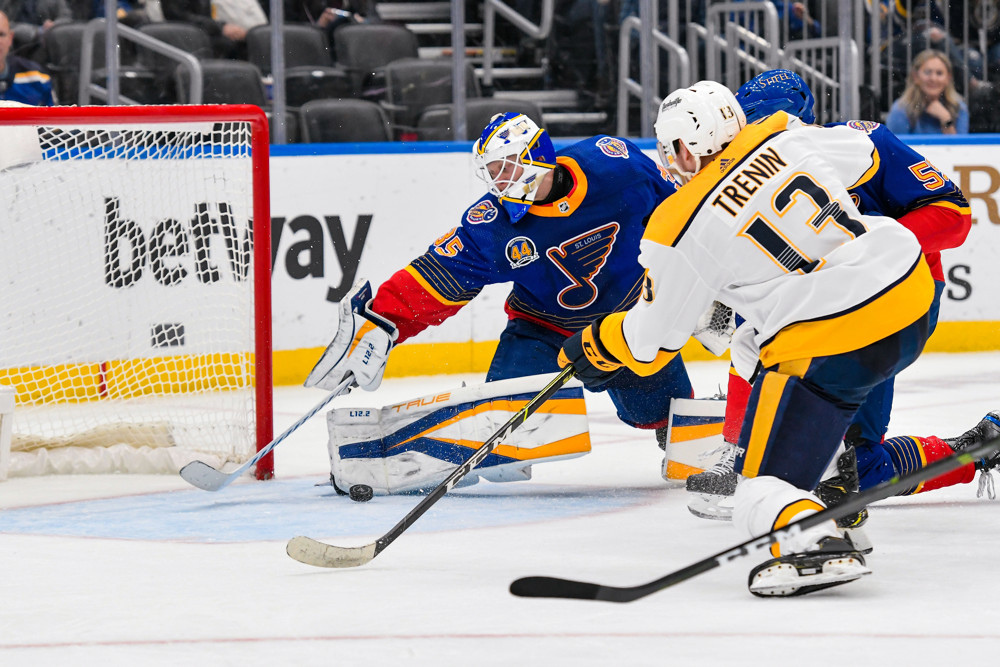By now, we’ve spent enough time getting up to speed with the analytics community. It’s time to figure out where we are today, and where we’re likely headed in the future. Like some sort of ultra-technological capitalist utopia, the field of hockey numbers is developing at a breakneck pace, due to advances in computing ability and fierce competition to become Ruler of Nerds.
In a word, the problem with the statistics we’ve introduced so far is generalization. These metrics are perfectly acceptable for painting a broad picture of how everyone’s playing. If you want specifics, though, you’d soon find yourself buried in an impressive stack of digital paper.
 Unfortunately, there isn’t really a shortcut for getting highly-specific contextual descriptions of hockey performances. Attention to detail is a requirement here. In the exhaustive search for the best descriptor of hockey that exists, though, the analytics community is now fixated on these highly specific data.
Unfortunately, there isn’t really a shortcut for getting highly-specific contextual descriptions of hockey performances. Attention to detail is a requirement here. In the exhaustive search for the best descriptor of hockey that exists, though, the analytics community is now fixated on these highly specific data.
Today, we’re going to talk about zone statistics. For the purpose of this article, I’m dividing these into three categories: offensive zone entries, defensive zone defense, and defensive zone exits.
Conveniently, the names of these categories are pretty descriptive. Let’s dive right in!
Offensive Zone Entries
Have you ever heard the phrase “dump and chase?” Well, way back in the distant 20th century, it was a bonafide offensive strategy. Nowadays, teams are smarter, faster, and have goaltenders that do the behind-the-net thing. It’s a brave new world, and offenses have been forced to adapt.
Teams that are more successful at scoring are those who possess the puck effectively. Instead of entering the offensive zone by sailing the puck in and chasing after it, you want players who can keep the puck on their stick or find a direct pass to a teammate. These are referred to as “possession entries.”
One substantial reason for the Nashville Predators’ success as of late is their ability to maintain possession as they transition into the offensive zone. Kevin Fiala, for example, ranked in the 96th percentile across the entire league in this category last season. In other words, he is truly elite when it comes to keeping the puck for the good guys.
He isn’t alone among Nashville forwards. Filip Forsberg and Kyle Turris ranked in the 91st and 77th percentile, respectively, for the percentage of possession entries last season.
Nashville defensemen deserve praise in this category as well. Although they tend to be a frequent source of raised eyebrows in the defensive zone, they are pretty darn great at the other end of the ice. P.K. Subban and (especially) Roman Josi earn most of their paychecks in this capacity. Subban ranked in the 68th percentile for his possession entry percentage last year. Incredibly, Roman Josi can be found in the 98th percentile.
Defensive Zone Exits
Noted vegan and all-around pleasant person Jeff Marek coined a lovely phrase to describe Nashville’s defense during the 2016-17 playoffs: “puck goes in, puck comes right back out.” Speed is the key in this area. Nashville’s defensemen are not particularly big or strong, but they can outskate many of the league’s top forwards. This trend carries into the modern day, with just a few minor strategic differences.
Typically, when the opposing team enters Nashville’s defensive zone, the Predators defensemen will do the dirty work in disrupting possession and causing turnovers. Meanwhile, the wings are already flying back up the ice, ready to execute a lightning-fast transition. If successful, whether via a pass forward or simply carrying the puck out of the defensive zone, this would be referred to as a “possession exit.”
It’s a tricky gamble, and doesn’t always pay off. Basically, they are minimizing the amount of defensive support in hopes for a rapid offensive response. It’s an admirably forward-thinking approach for the often painfully old-fashioned Nashville coaching staff.
How do the players shape up, though? Kevin Fiala, once again, is our gracious overlord. Not only is he a master of entering the offensive zone while maintaining possession, he exits the defensive zone just as cleanly. In this case, he ranked in the NHL’s 88th percentile in his percentage of possession zone exits last season. However, in this case, no other Nashville forward is even in the vicinity. Forsberg, by comparison, ranked in just the 35th percentile for percentage of possession zone exits.
As mentioned, however, Nashville’s defensemen come up big here. It should be noted, of course, that “defense” is a deep state myth. In modern hockey, the best defense is just to maintain possession yourself. To do that successfully, your defensemen need to be some of the best puck movers on the ice.
Somewhat unsurprisingly, Subban makes a reappearance here. Last year, he ranked in the 94th percentile for possession exits per 60, and the 81st percentile in percentage of possession exits. Josi, too, put up impressive numbers: 73rd and 87th percentiles, respectively.
Mattias Ekholm and Ryan Ellis are a bit of a mixed bag. Ellis is above average, but not as good as you might expect. Ekholm’s numbers, on the other hand, are simply bad. There are many potential explanations for this. I’d offer that they’re much more willing to defer to their partners, rather than risk moving the puck out themselves. It’s not necessarily a bad thing, but I think Ekholm is a much better puck mover than we give him credit for. His results are surprisingly low, as far as I’m concerned.
Zone Entry Defense
 Zone defense is usually only tracked for defensemen, due to the relatively low occurrence of forwards defending rush attacks from the opposition. Basically, it comes down to how many times the opposition is allowed to carry the puck into your defensive zone (possession entries allowed) vs. how many times their possession is broken up (breakups). A nice subtitle for this section would be “The P.K. Subban Appreciation Power Hour.”
Zone defense is usually only tracked for defensemen, due to the relatively low occurrence of forwards defending rush attacks from the opposition. Basically, it comes down to how many times the opposition is allowed to carry the puck into your defensive zone (possession entries allowed) vs. how many times their possession is broken up (breakups). A nice subtitle for this section would be “The P.K. Subban Appreciation Power Hour.”
For some context, I’ll actually start with Ekholm. He’s colloquially considered a “defensive specialist,” i.e. not as attack-minded as some of his peers. That said, his zone defense numbers from last season indicate some room for improvement. For the number of defensive zone breakups per 60 he created last season, he ranked in just the 40th percentile. In terms of possession entries allowed per 60, he does jump to the 77th percentile. However, you’d expect more from a defensive player of his caliber.
With all that said, P.K. Subban descends from the heavens like a sort of energetic Canadian messiah. In both of the aforementioned categories: possession breakups per 60 and possession entries allowed per 60, he ranked in the league’s 97th percentile last year. Understand this, and you might start to see why I react so, well, aggressively when he gets trashed by some of his own team’s fans.
As far as the other two are concerned, some of the Predators’ defensive woes are really highlighted by this metric. Josi is actually quite good at breaking up the rush (83rd percentile last year), but that’s kind of it here. Both he and Ellis were either average or just plain bad when it came to allowing possessions into their defensive zone. Unfortunately, this is just a brief glimpse into some of the defensive issues that plague the duo.
Conclusion
While a bit dry, these metrics paint essentially the best picture for what’s happening on the ice. From an analytics perspective, it’s hard to beat zone statistics. The only real downside is the vast amount of work required to track them accurately. Oh, and we still have no information from the neutral zone. Still, if you find someone who tracks zone statistics well, shower them with love and admiration. Oh, and Patreon donations.
All of the information in this article belongs to Corey Sznajder (@ShutdownLine) and CJ Turtoro (@CJTDevil). These guys are pioneering zone statistics data. What’s more, they present it in a really informative and user-friendly way.
George and Michael are always open to questions, comments, and slightly irritating spells being cast on them. Feel free to reach out to them on Twitter (@GeorgeM1019 and @WadeM117), or to Penalty Box Radio on Twitter and Facebook.
View the rest of the Approachable Analytics Series: Corsi and Fenwick, Zone Starts, Scoring Chances and Danger Zones, Per 60 Stats




















